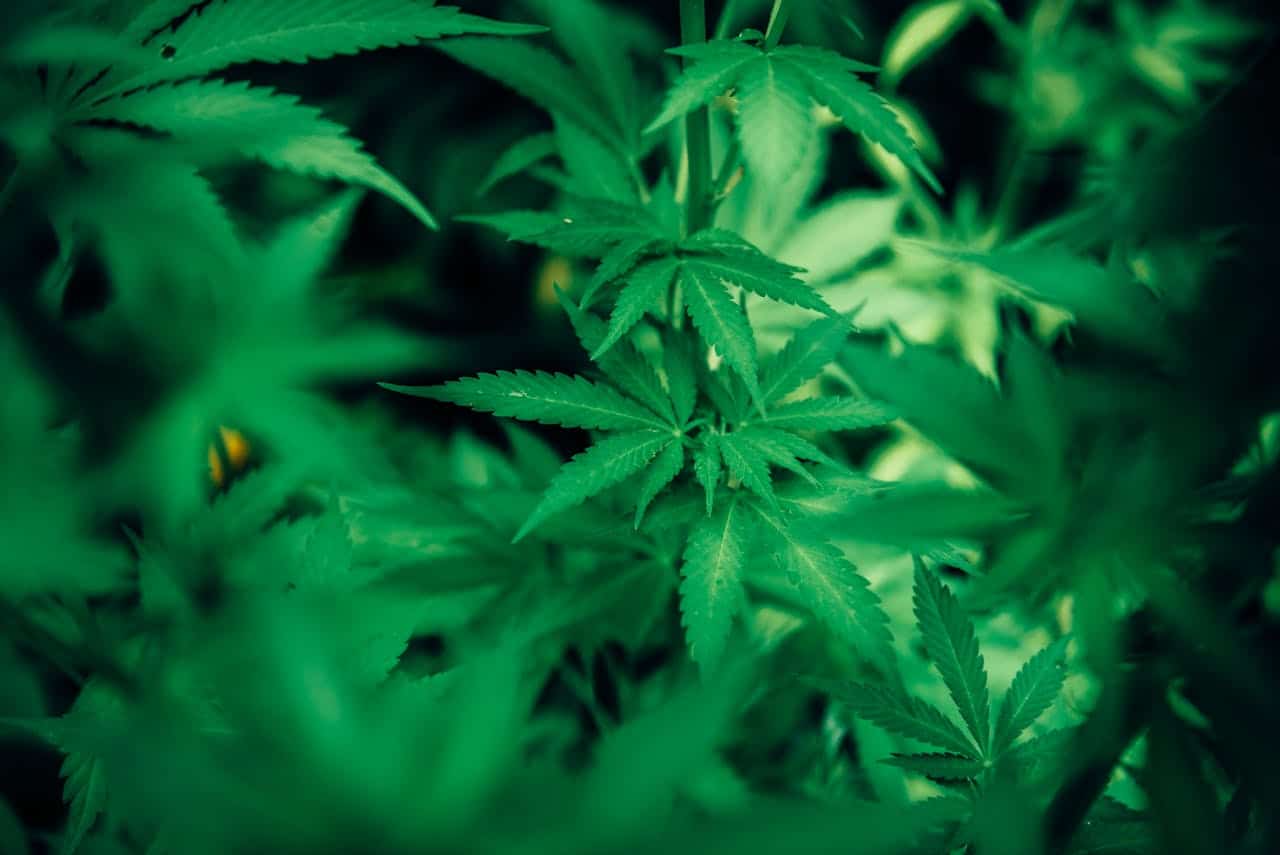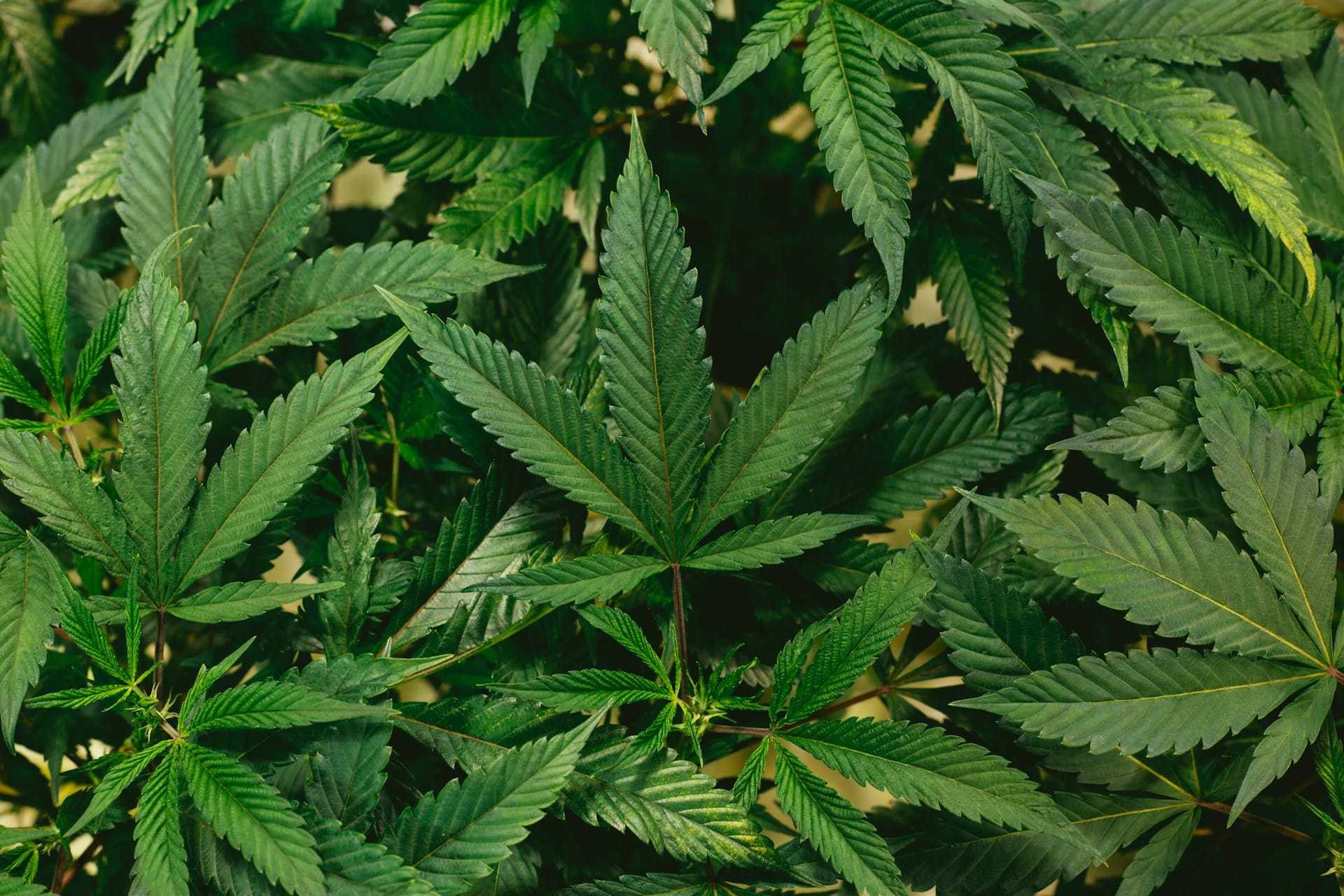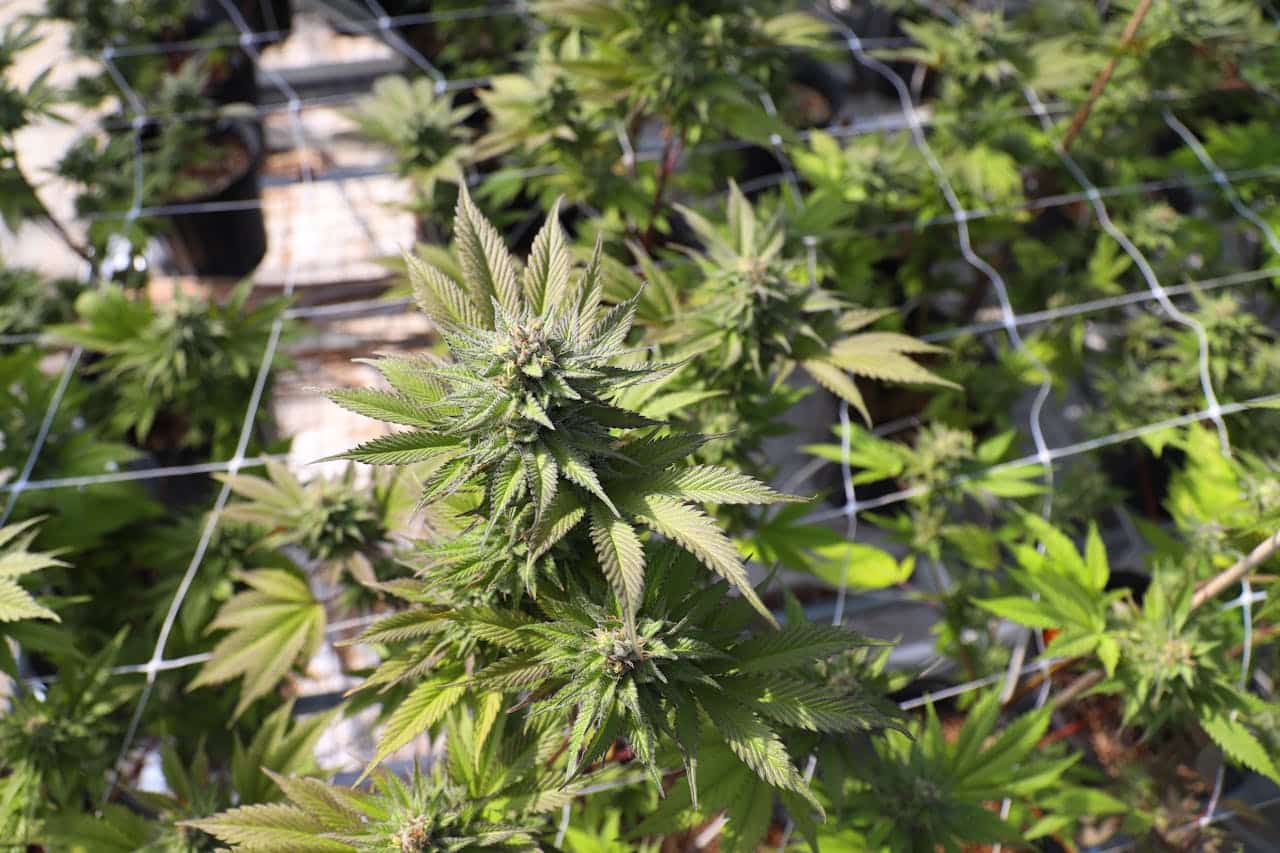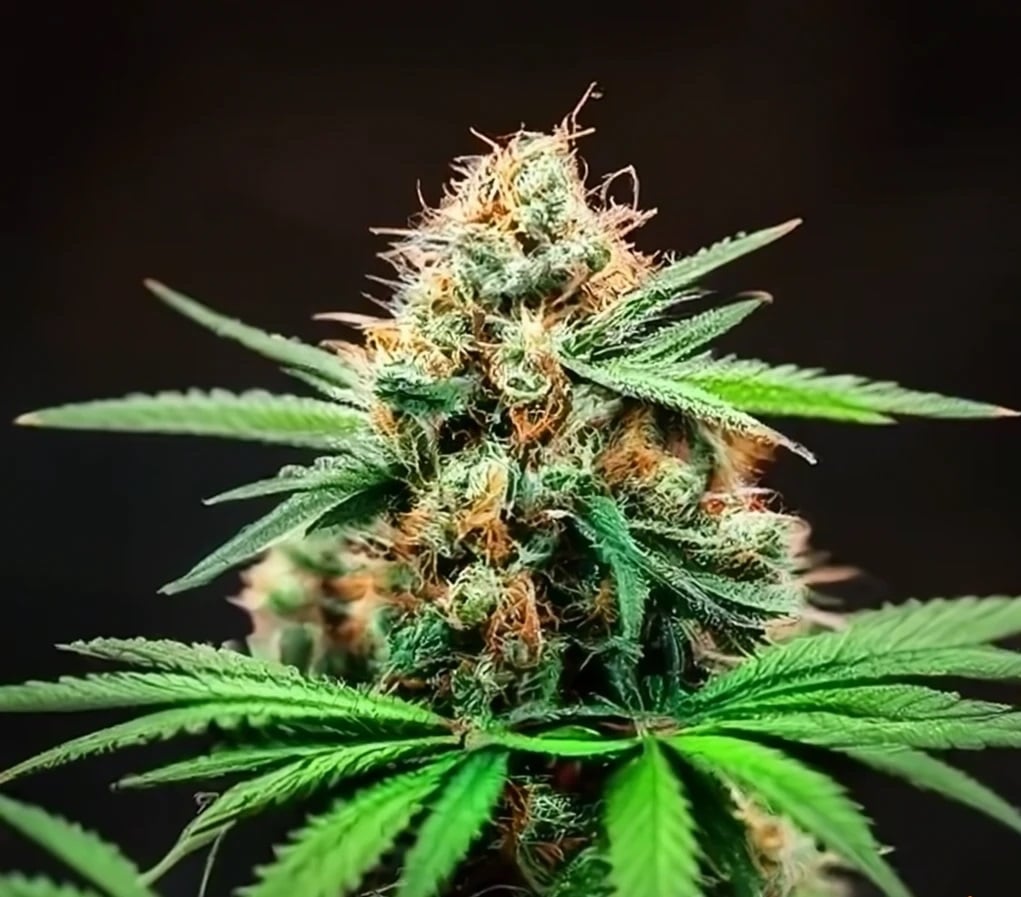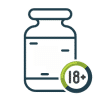All about Cannabinoids
The hemp plant has been known for centuries. Used for its many virtues for the human body, it is of increasing interest to science. Depending on the plant used and how it is grown, its effects, taste and efficacy vary widely.
What causes it? Cannabinoids. These molecules naturally present in cannabis awaken our own receptors and act on our system according to their nature.
If you want to know everything there is to know about cannabinoids, stay here, and you'll find out everything you need to know about these molecules with their sometimes... unsettling effects.
What are cannabinoids?
There are three types of cannabinoids:
- Plant cannabinoids, those naturally present in the hemp plant;
- Endogenous cannabinoids: secreted by certain animal organisms;
- Synthetic cannabinoids: manufactured in laboratories.
In this guide, we will focus solely on the plant cannabinoids secreted by the hemp plant.
In concrete terms, cannabinoids are a group of chemical substances produced by the cannabis plant. When the plant is consumed, they attach to the endocannabinoid receptors found in humans and mammals.
There are over a hundred different terpenes in a single plant hemp, and many studies are still underway to investigate the effects of these different molecules on the human body. According to this research, it is very likely that the differences in effect and potency between cannabis varieties are caused by the interaction between THC, other cannabinoids and terpenes.
In this guide, we'll look at the main cannabinoids, their functions and effects.
Endocannabinoid receptors :
In humans, there are two types of receptor affected by hemp molecules: CB1 and CB2.
CB1 receptors:
- mediate the effects of cannabinoids on the brain,
- are important for memory, appetite, mood, sleep, pain perception and so on.
CB2 receptors:
- are present in immune cells
- act to reduce inflammation.
Once consumed, cannabinoids interact with these receptors to produce effects on the nervous system and brain.
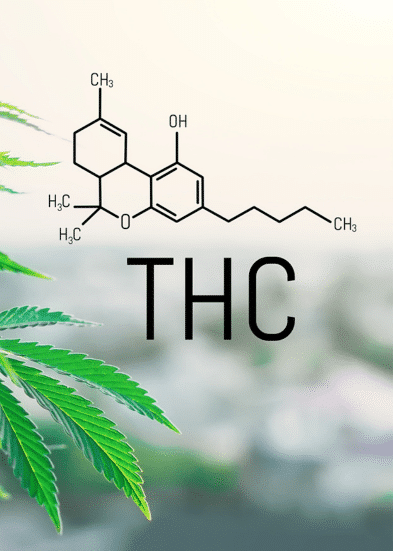
The best known is THC.
THC, short for Δ9-tetrahydrocannabinol, is the best-known and most studied cannabinoid in the hemp plant. It is responsible for the psychoactive and euphoric effects of cannabis consumption. In fact, THC acts on certain parts of the brain, resulting in an increase in dopamine, responsible for the sensation of well-being and pleasure.
According to some studies, THC has a number of positive effects on the human body, acting as an anti-inflammatory, antidepressant, muscle relaxant, pain reliever and neurological treatment. These analyses still need to be deepened and confirmed by new studies before science can truly affirm these claims.
Considered a narcotic, THC has been banned in France since 1970, so its production, resale or consumption is totally illegal. The harmful effects of consuming too much THC should not be underestimated. Each person reacts differently to its consumption, and side effects such as memory loss, decreased attention span, tachycardia, anxiety and even paranoia can appear in some people.
CBD, the second most common cannabinoid in hemp.
CBD, short for cannabidiol, is also a cannabinoid well known to researchers and the second most common molecule found in the hemp plant.
Unlike THC, it is not considered a psychotropic drug and is perfectly legal in France, provided the THC content of the product is less than 0.2%.
CBD can be found in a variety of forms to appeal to both novice and more seasoned consumers:
- In flowers, for consumption at tea bag, as a spray or in culinary preparations;
- By oils, by ingesting a few drops;
- In cosmetics: balms, serums, creams;
- In e-liquids, for vaping ;
- In drinks, capsules, etc.
Numerous scientific studies now prove the benefits of CBD consumption, which, unlike THC, is very well tolerated with few side effects.
For example, in 2008 and again in 2017, two studies showed that CBD has a real influence on the body by restoring " the body's homeostasis ". The researchers explain that CBD can restore the balance of temperature, acidity and blood sugar levels.
CBD is also said to stimulate the production of serotonin, also known as the happiness hormone. Studies carried out in 2019 and 2011 by neurology researchers highlight the effect of cannabidiol on anxiety behaviours and the treatment of social phobias.
CBD is also used worldwide for its anti-inflammatory, relaxing and soothing properties. Now known to all, it is becoming popular with sports enthusiasts, who appreciate it for its pain-relieving properties, to combat insomnia and relieve muscular pain.
CBN, another psychoactive cannabinoid.
CBN or cannabinol is a mildly psychoactive cannabinoid found in small quantities in the hemp plant. This molecule is legal in France, and its effects are said to be equivalent to around 10% of THC's.
Unlike the molecules mentioned above, CBN does not come naturally from cannabis, but is the fruit of a THC decarboxylation process. Specifically, cannabinol is not produced immediately by the plant, but develops as THC ages under the effect of heat and exposure to oxygen.
This molecule is also known to researchers and is the subject of numerous studies. Although research into its benefits is still limited, it tends to prove that its effects are similar to those of CBD. For example, cannabinol is said to reduce pain, stimulate appetite and make it easier to fall asleep.
Studies are underway to investigate the following potential benefits: relaxing, antibacterial, neuroprotective, anti-inflammatory and eye pressure reducer.
CBG, the mother of cannabinoids.
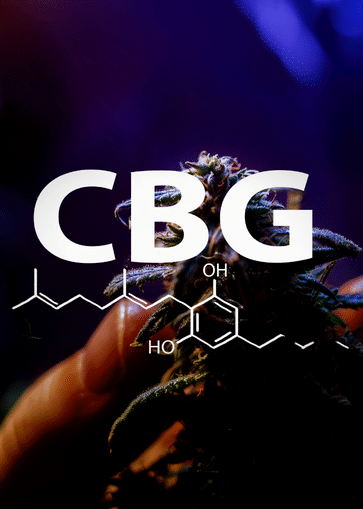
Cannabigerol, also known as CBG, is a cannabinoid with no psychoactive effect. It is thought to be present in small quantities in cannabis. Some studies present CBG as the precursor of all cannabinoids. Indeed, although it may seem insignificant at first, CBG is the stem cell of CBD, THC and other cannabinoids, and is therefore responsible for their creation. This explains why it is present in such small quantities in most varieties of hemp.
According to certain studies, CBG has a very high affinity with the CB1 and CB2 receptors present in our brain. This affinity makes Cannabigerol highly effective in improving many health problems.
However, there are still too few clinical trials to draw any real conclusions about the improvement in consumers' health.
Nevertheless, some researchers have drawn up a list of the benefits of this molecule that come close to the effects of CBD. Its therapeutic potential, for example, includes anti-inflammatory, anti-bacterial, anti-coagulant and relaxing properties, as well as stimulating the appetite, possessing significant antibiotic properties and proving highly effective as an antifungal and for treating psoriasis.
CBC, a rare cannabinoid.
CBC, or Cannabichromene, is a rare cannabinoid that is rarely found at hemp. It shares structural similarities with CBD, CBN, CBG and THC, and unlike THC is non-psychoactive. Science is only just beginning to take an interest in this molecule and its potential, but it would seem that this cannabinoid plays an important role in the entourage effect so sought-after by consumers.
Cannabichromene is able to bind with TRPV1 and TRPA1 receptors, located in the cell membrane and involved in the transmission of pain and inflammation-related signals. A team of researchers in Naples has already observed the benefits of CBC on so-called nociceptive pain in the rats studied. Nociceptive pain occurs following a fracture, contusion or burn. The results of the study clearly demonstrate that CBC has a real alleviating effect on nociceptive pain.
Ongoing studies tend to prove that CBC has anti-inflammatory, pain-relieving and anti-fungal virtues, as well as acting as an antidepressant.
Research is currently underway to analyze its effects as a treatment for Alzheimer's disease.

CBL, a cannabinoid derived from BCC.
Cannabicyclol or CBL is a cannabinoid derived from the natural breakdown of another cannabinoid, CBC, by the action of oxidation and sunlight. Unlike CBD or THC, CBL has not yet been extensively studied, so little is known about its potential effects and benefits. Most existing studies focus on its chemical structure and synthesis, rather than its impact on the human body.
However, it has been shown that CBL does not contain double bonds (unlike THC), which are responsible for its psychoactive and intoxicating effects.
How it affects the body and whether it has any affinity with the receptors of the endocannabinoid system are still unknown. Since its discovery in 1964, a handful of studies have incorporated CBL with negative results on its efficacy. This research suggests that CBL does not have the same medicinal value as THC, CBD or the other cannabinoids discussed above. Other tests using mixtures of cannabinoids, including Cannabicyclol, have produced more encouraging results in the treatment of inflammation and even in the slowing of certain tumors. Access to this scientific literature remains very limited and inconclusive.
With the development of extraction methods, we can hope that the scientific community will take a closer interest in this molecule, and that it will be the subject of more intensive research.
CBT, perhaps the moderator of THC?
Cannabitriol, or CBT, was discovered in 1966 following a study of various cannabinoids, but is found in minute quantities in hemp. Like its cousin CBL, CBT still attracts very little research interest, and for good reason: it is not present in all strains of hemp and even when it is, it is only present in very small quantities. Extracting it is therefore complicated, and there are very few studies on its benefits.
We do know, however, that its chemical structure is similar to that of THC, without knowing whether it produces similar effects or even has psychoactive properties.
A 2007 study on the search for antibodies that could attenuate the psychoactive effects of THC revealed that cannabitriol could act as a "moderator" of THC's harmful effects. It would therefore suppress the effects that modify the state of consciousness (such as memory loss, lack of concentration, etc.).
What can we expect from this molecule? Although the lack of scientific information on the subject makes it difficult to answer this question, the proximity of the chemical structure of CBT and THC suggests that these two molecules could act in a similar way on the body, minus the psychoactive effects.
CBDa, the precursor to CBD.
Cannabidiol acid, shortened to CBDa, is another of the many components of hemp, and is also a cannabinoid.
CBDa is the precursor acid of CBD. From a scientific point of view, CBD and CBDa do not have the same chemical compound: CBD does not have the carboxylic acid group present in CBDa.
In specific situations, notably with the help of heat and sunlight, CBDa undergoes decarboxylation. It loses its acid group and converts to CBD. We could therefore say that CBDa is the parent of CBD. However, as mentioned above, it is not the "original" cannabinoid. The mother of all cannabinoids is none other than CBG, which subsequently gives rise to cannabinoids such as THCa (which becomes THC), CBDa (which, as you may have guessed, becomes CBD), CBCa and so on.
At present, we know that acids do not act in the same way as cannabinoids, as they do not bind to the same receptors. However, they remain highly complementary in their therapeutic approach.
The effects of CBDa are relatively similar to those of CBD. This molecule is said to be effective in managing inflammation, reducing the proliferation of inflammation and sensations of pain. According to a 2013 study, it also acts as an anti-vomiting agent.
A Japanese study on rats also demonstrates CBDa's effectiveness in increasing serotonin levels in synapses, thereby reducing stress and other anxiety-related symptoms.

THCV, THC's cousin.
THCV, for tetrahydrocannabivarin, is a little-known cannabinoid whose potential benefits are of increasing interest to researchers. Its molecular formula is close to that of THC, with certain differences that make them more cousins than brothers.
We now know that THCV, which is also psychoactive, differs from THC mainly in its appetite-suppressant effect. THC is known to make people want to eat, whereas THCV, through a different action on CB1 and CB2 receptors, will stop these feelings of hunger.
In fact, researchers may conclude that THCV blocks the two main adverse effects of THC: memory loss and increased blood flow.
To find out more about the effects and molecule of THCV, read our detailed article here.
Conclusion on cannabinoids
We've taken a look at the best-known cannabinoids and those most commonly found in hemp .
There are over a hundred cannabinoids, but too few studies have been carried out to determine the effects and benefits of each one.
We hope this guide has helped you learn more about the main cannabinoids, or better understand them to optimize the effects you're looking for.
We can remain optimistic and imagine that science will take the time to study these molecules in greater detail, revealing all their secrets.
For the record...
The first study of the therapeutic effects of cannabis was carried out in 1839 by Irish physician and researcher William B. O'Shaughnessy. Publishing only hypotheses on its potential medical applications, the researcher went no further in his analyses of the plant. He did, however, open the door to the discovery of compounds, later known as cannabinoids.
A century later, in the 1930s, British chemist Robert Cahn discovered the partial structure of Cannabinol (CBN). Thanks to this work, American chemist Roger Adams succeeded in isolating the first cannabinoid, CBD. His research was also responsible for the discovery of THC a few years later.


